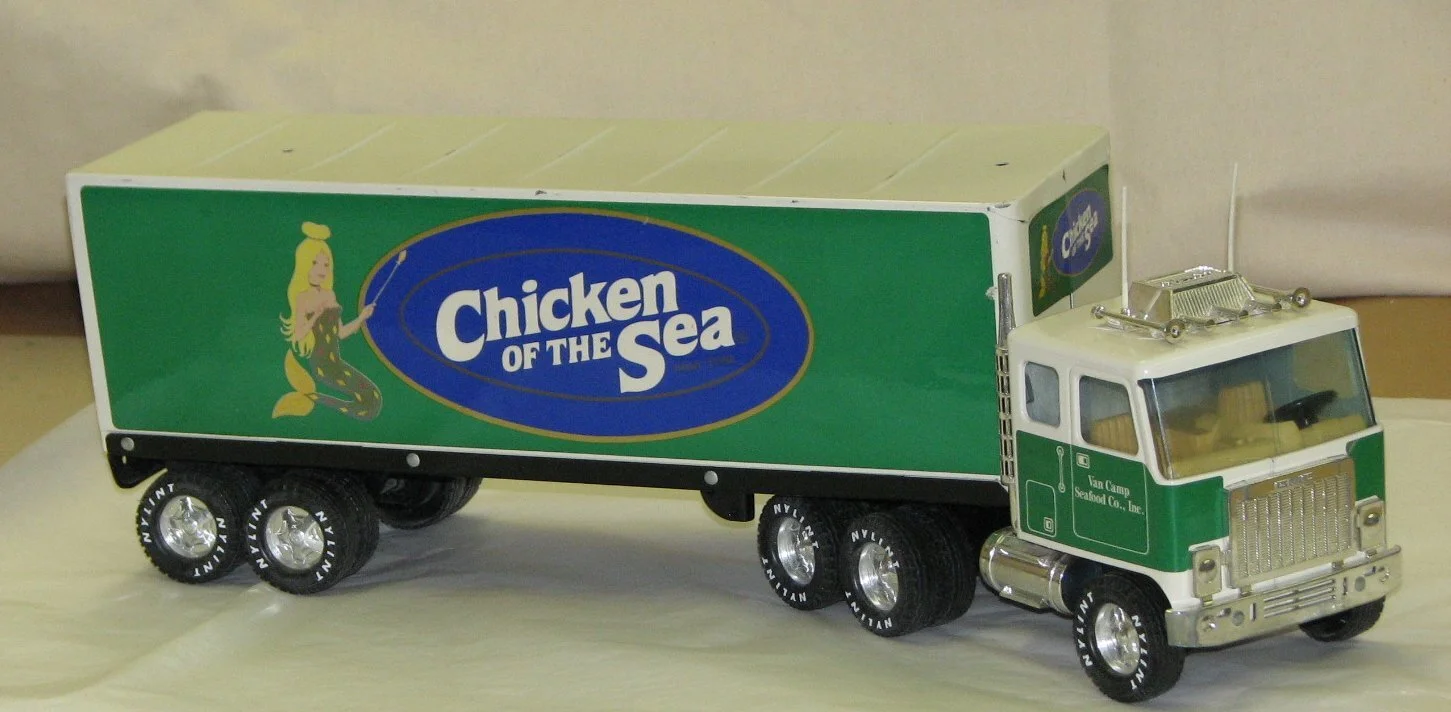“It Tastes Like Chicken” – How Local Canneries Marketed Fish in a Can By Marifrances Trivelli, Director, Los Angeles Maritime Museum
“It Tastes Like Chicken” – How Local Canneries Marketed Fish in a Can
By Marifrances Trivelli, Director, Los Angeles Maritime Museum
The National Fisheries Institute calculates that Americans consume one billion pounds of canned and poached tuna each year. It is hard to imagine a time when consumers were uneasy with the idea of eating fish from a can. To increase the public’s appetite for canned fish, canneries marketed their products through television, radio, and print ads, as well as through a wide array of promotional items.
A 1920’s advertisement for White Star Tuna in jigsaw puzzle format.
A century ago, the Port of Los Angeles was the world’s largest commercial fishing industry, with its first cannery, (California Fish Company) established on Terminal Island in 1891. The cannery primarily packed sardines and mackerel.
The Franco-Italian Cannery produced gourmet quality tuna, and their can labels bore the “SEA BOY” logo.
In the early 1900s, the once-plentiful sardines disappeared from the California Coast. Albert Halfhill of San Pedro experimented with packing albacore tuna in cans in order to supply a replacement product. The idea of eating fish from a can did not catch on until after World War I, when meat shortages forced American consumers to include canned tuna as part of their regular diets. Major canneries in the Port of Los Angeles including French Sardine (Star-Kist) and Van Camps (Chicken of the Sea) launched international marketing campaigns to promote their respective brands. The effort was hugely successful, and today, packaging featuring Charlie Tuna and the Chicken of the Sea Mermaid are now familiar to consumers of all ages.
A children’s toy truck advertising Chicken of the Sea was another way to familiarize young consumers with this particular brand of tuna.
A “Charlie Tuna” telephone from the 1970s is now a collector’s item. (The keypad is on the underside of the base” )
The images of tuna products are from the collection of the Los Angeles Maritime Museum in San Pedro, California. The museum maintains an archive documenting the local fishing industry as well as a major exhibition: “Caught, Canned, and Eaten”. Be sure to visit when the museum re-opens later this year, and view the historic photo collections on line today at www.lamaritimemuseum.org and select “research”.
On this label which was affixed to cans processed at Terminal Island, actor William Boyd as “Hop-Along Cassidy” extols Chicken of the Sea as “The Brand that Made Tuna Famous”.
Free recipes suggested many ways that tuna could be prepared and served, while reminding consumers that tuna was “a most delightful part of the meal”.
Visitors to the Star-Kist cannery often received paper hats as souvenirs. This hat is from the early 1960s, and depicts the newly-created Charlie the Tuna sharing space with the logo of his fisherman predecessor.
About the Author:
Marifrances Trivelli is the Director of the Los Angeles Maritime Museum, which preserves and shares the history of the Port of Los Angeles. She has a B.A. in Political Science from the University of Rhode Island, an M.A in History from the University of Connecticut, and is a graduate of the Getty Museum Management Institute. Marifrances is the President of the Council of American Maritime Museums, and serves on the City of Torrance’s Historic Preservation Commission. She invites all readers of the Palos Verdes Pulse to explore the Museum’s website www.lamaritimemuseum.org and to visit in person once the Museum re-opens later this year.









